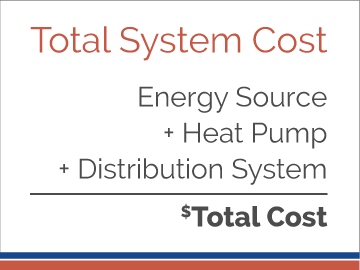There aren’t many downsides to installing a geothermal system. Heat pumps are eco-friendly, efficient, comfortable, and longer lived than most conventional systems. They lower your utility bills drastically and allow you to tap into the clean, renewable energy right beneath your feet. The only con of installing a geothermal heating system is the upfront cost. The geothermal heat pump cost is usually more expensive than conventional HVAC systems. Here’s why:
Geothermal Heat Pump Cost
There are three main parts to geothermal heat pump cost:
- the energy supply source
- the heat pump itself, and
- the energy distribution system.

The cost of the heat pump and the energy distribution system (such as ductwork or radiant in-floor heat) is usually the same as a conventional oil furnace and air conditioning system. The energy distribution system cost would be the same. The cost of a geothermal heat pump is comparable to the cost of a furnace and central air conditioner or air source heat pump. If you were just installing the heat pump and the energy distribution system, the two would cost the same. Where it gets more expensive is the cost of installing the energy supply source or ground loop.
Installing the Energy Supply Source
This is the part of the system that harvests the free, renewable energy from the ground and transfers it to your heat pump. The energy supply source can be an open water well or closed ground loop. To install this system, a geothermal installer must either drill a water well or excavate the ground around your home to install plastic piping in the earth. The total cost of this part of the installation will vary depending on what type of energy supply source is right for your home. To get an accurate estimate of the cost of your geothermal installation, find an installer near you.
Geothermal Heat Pump Cost Payback
While the geothermal heat pump cost might be more than a traditional HVAC installation, the monthly savings will far exceed the cost difference. Typically we estimate that the savings you’ll see on your utility bill will pay for the extra installation cost in five to seven years, depending on the availability of local rebates on heat pumps. You can find more information about local norms for geothermal heating system costs here.



